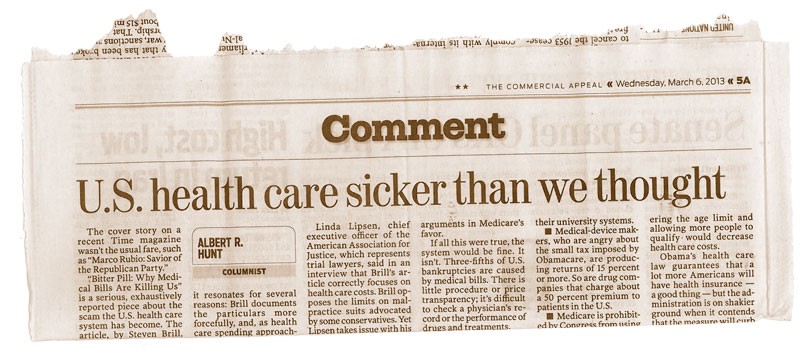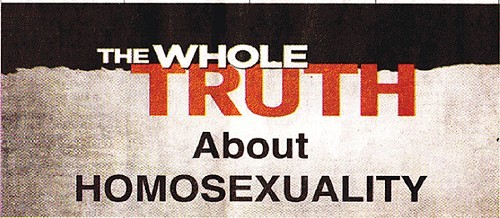Let’s cut right to the chase. The head of nonprofit Baptist hospital system, Stephen Reynolds, makes more than $3 million a year, and the head of nonprofit Methodist hospital system, Gary Shorb, makes more than $2 million, according to 2011 tax returns for the hospital systems.

Why do I bring this up now? Because a column on the op-ed page of The Commercial Appeal last week set off my inner Mr. Cranky.
The column by Albert R. Hunt, a columnist for Bloomberg View, was titled “U.S. health care sicker than we thought.” Hunt praised a recent story in Time magazine by Steven Brill about “the scam the U.S. health care system has become” called “Bitter Pill: Why Medical Bills are Killing Us.”
Hunt and Brill zeroed in on the fact that nonprofit hospitals, “the cornerstone of many communities, capriciously overcharge patients, sticking the powerless with exorbitant bills while paying lavish salaries to their executives.”
Another Brill bite: “In hundreds of small and midsize cities across the country — from Stamford, Conn., to Marlton, N.J., to Oklahoma City — the American health care market has transformed tax-exempt ‘nonprofit’ hospitals into the towns’ most profitable businesses and largest employers, often presided over by the regions’ most richly compensated executives.”
At the end of his column, Hunt wrote that “the system’s big stakeholders have well-connected lobbyists, are important campaign contributors or forces in their communities. They react to articles such as Brill’s, but really aren’t much worried. They are rich, powerful, and protected.”
Yes, they are protected, and one way they are protected is by local media. On March 3rd, CA editor Chris Peck used his column to write about health care and the newspaper’s meeting with Shorb, CEO of Methodist. The subject of salaries and Brill’s article apparently never came up. Or at least it didn’t make it into Peck’s column.
Perhaps that was because, as former CA editorial page editor Otis Sanford wrote in his column two years ago, “Salaries are always a touchy subject.”
Salaries are a touchy subject because people like to know what other people make, but most of them don’t like other people to know what they make. The salaries paid by nonprofits, if they are over a certain amount, are reported on tax Form 990, available online via guidestar.org to anyone with minimal curiosity and computer skills.
Some salaries are touchier than others. When former Flyer reporter Mary Cashiola left the newspaper to take a job as brand manager for the city of Memphis, the CA saw fit to publish her salary — a jaw-dropping $64,000. Twice. The CA and local television stations often report on the salaries of public officials, as they should. It so happens that women and minorities are heavily represented in those ranks, just as they are underrepresented in the executive suites of big business.
What Memphis media rarely do, however, is report the salaries of highly paid chief executives of nonprofits even when they are in the news. Nonprofits, foundations, and quasi-public organizations that get public funding and/or tax-exempt status have taken over a big slice of the functions governments used to do — the Riverfront Development Corporation, Overton Park and Shelby Farms conservancies, the Kroc Center, and charter schools to name a few.
Since publishing the first-ever survey of local nonprofit salaries 20 years ago, Memphis magazine and the Flyer have periodically reported on nonprofit and corporate salaries. This is not wildly popular with the people in the surveys or, probably, some people in our sales department. But it makes no sense to report about, say, an athlete or celebrity making $10 million a year (they don’t care what you say and are not going to call you up) or a public employee making $64,000 or $200,000 and report nothing about the local people in the middle who are just as influential.
The backdoor way to do this is to let someone else do the dirty work. But why have Al Hunt use space in your newspaper to quote Steven Brill on something your own reporters can localize? It’s like doing an arm’s-length story about the National Enquirer breaking a sleazy story.
Except salaries are not sleazy. They’re serious business and may well be justified and then some. If it’s worth Steven Brill’s time and Al Hunt’s time and space in your product, and there’s a local angle that hits you in the face, it’s worth your time too.
City Beat columnist John Branston is a Flyer senior editor.


